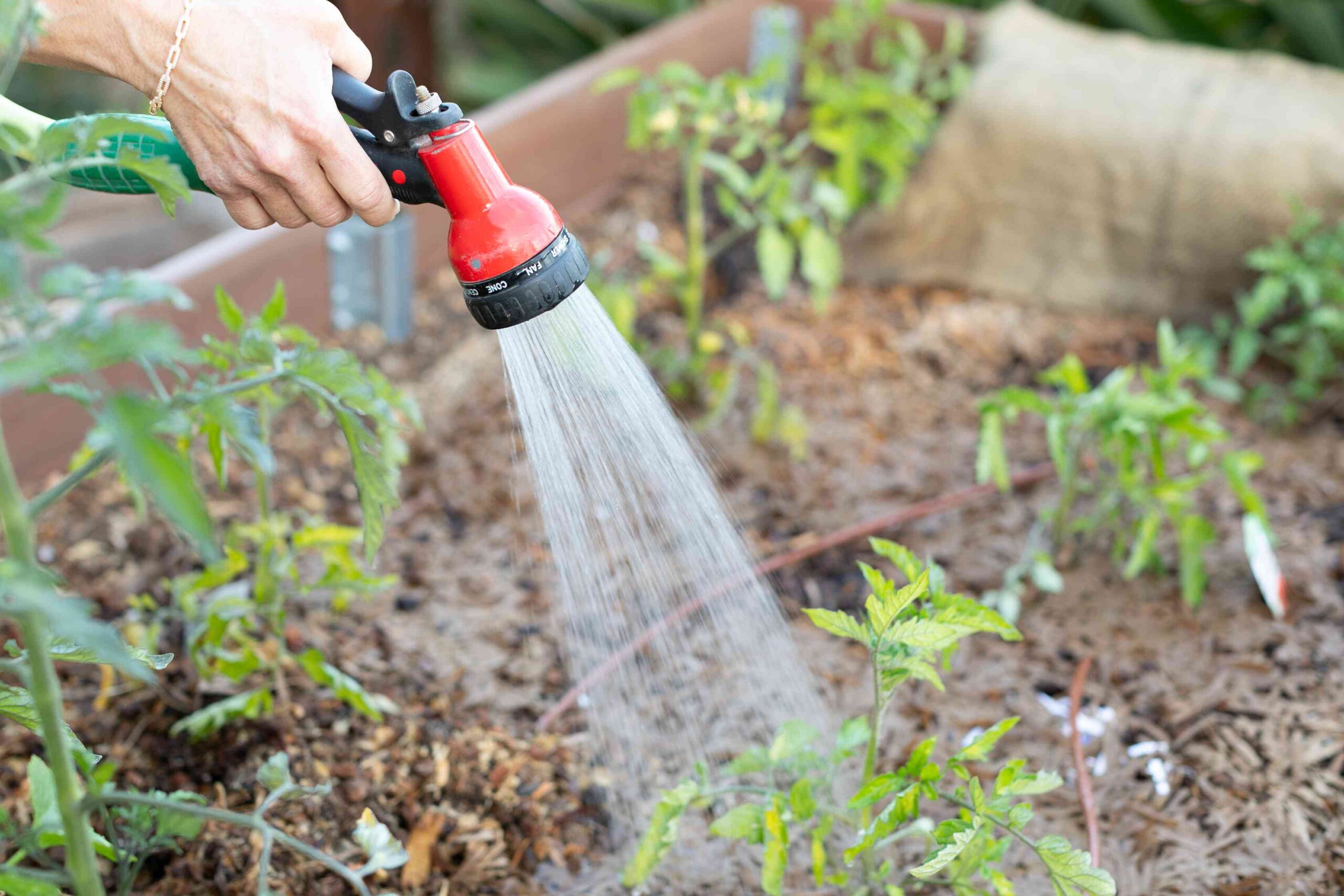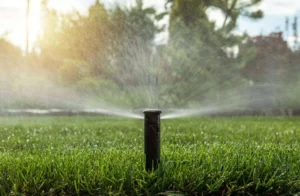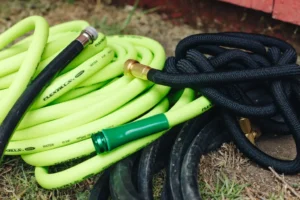The Best Time to Water Your Garden: Ultimate Guide
Water is the lifeblood of your garden, but timing is everything when it comes to irrigation. Watering at the optimal time can be the difference between thriving plants and wasted resources. This comprehensive guide explores the science behind garden watering timing, helping you develop an efficient watering schedule that conserves water while maximizing plant health.
Why Timing Matters When Watering Your Garden
The timing of your watering routine significantly impacts plant health, water conservation, and even pest management. Understanding the science behind watering timing helps you make informed decisions about when to reach for the hose or turn on the sprinklers.
The Science of Plant Hydration
Plants absorb water through their roots and lose it through tiny pores called stomata on their leaves—a process called transpiration. During hot, sunny days, plants transpire more rapidly, which can lead to water stress if soil moisture is inadequate. When you water during the heat of the day, much of that precious moisture evaporates before plants can fully benefit from it.
According to the USDA Natural Resources Conservation Service, proper irrigation timing can reduce water use by 20-50% while maintaining or even improving plant health. The agency notes that “timing irrigation to match plant water needs is an essential part of efficient water management” (USDA-NRCS).
Environmental Considerations
Beyond plant health, proper watering timing has broader environmental impacts. The Environmental Protection Agency (EPA) estimates that residential outdoor water use in the United States accounts for nearly 9 billion gallons of water each day, primarily for landscape irrigation. In some regions, outdoor watering represents as much as 60% of total household water consumption (EPA WaterSense).
By timing your watering correctly, you not only help your garden thrive but also contribute to conservation efforts in your community.
The Best Time to Water Your Garden: Morning vs. Evening
Garden experts widely agree that early morning is the optimal time to water most garden plants. Let’s explore why morning watering provides advantages and compare it with evening watering to understand the differences.
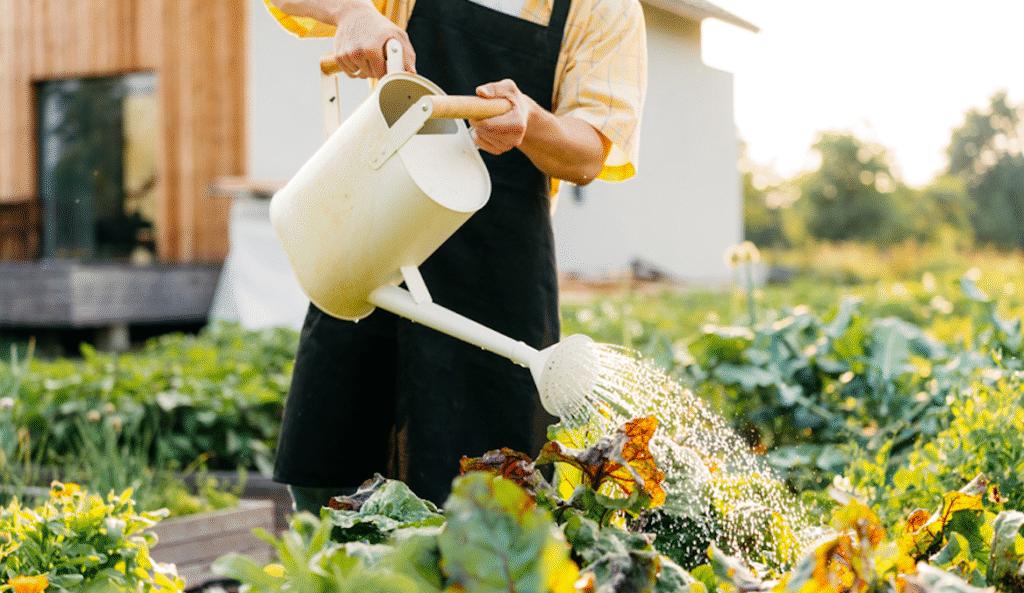
Early Morning: The Golden Hour for Garden Watering
Watering your garden between 5:00 AM and 9:00 AM provides several significant benefits:
Reduced Evaporation: Morning temperatures are cooler, so water has time to penetrate the soil before the day’s heat causes excessive evaporation. This efficiency means more water reaches plant roots where it’s needed most.
Disease Prevention: Morning watering allows foliage to dry completely during daylight hours. Wet leaves during nighttime hours create ideal conditions for fungal diseases like powdery mildew and black spot to develop. By watering in the morning, leaves have all day to dry in the sunlight.
Improved Absorption: Plants often absorb water more efficiently in the morning as they prepare for the day’s photosynthesis process. This makes morning watering particularly effective for providing hydration when plants need it most.
Wind Conditions: Early mornings typically have calmer winds, resulting in more accurate watering with less drift—especially important when using sprinklers or irrigation systems.
Evening Watering: A Viable Alternative
If morning watering isn’t possible due to your schedule, early evening (4:00 PM to 6:00 PM) can be your next best option:
Temperature Consideration: The key is to water early enough that leaves have time to dry before nightfall. In summer, this might mean watering no later than 6:00 PM in many regions.
Reduced Evaporation: Like morning watering, evening irrigation takes advantage of cooler temperatures to reduce evaporation.
Schedule Flexibility: For many home gardeners with day jobs, evening watering fits better into their daily routines.
However, evening watering comes with some cautions. Wet foliage overnight can promote fungal diseases in susceptible plants. If you must water in the evening, focus on directing water to the soil rather than spraying the leaves.
Time Comparison Chart: Morning vs. Evening Watering
| Factor | Morning Watering (5-9 AM) | Evening Watering (4-6 PM) |
|---|---|---|
| Evaporation Rate | Minimal – temperatures cooler | Moderate – still some heat of the day |
| Disease Risk | Very Low – leaves dry during day | Moderate to High – potential for overnight leaf moisture |
| Water Efficiency | Excellent – optimal absorption | Good – reduced evaporation from heat |
| Wind Interference | Minimal – typically calmer air | Variable – afternoon winds common in many regions |
| Temperature Stress | Reduced – prepares plants for day’s heat | Minimal – helps plants recover from day’s heat |
| Scheduling Convenience | Challenging for some work schedules | Better fits many people’s daily routines |
Adapting Watering Times to Seasonal Changes
Just as your wardrobe changes with the seasons, your garden watering schedule should adjust to seasonal variations. Understanding how to modify your watering timing throughout the year helps optimize plant health while conserving water.

Spring Watering Strategy
As plants emerge from dormancy and enter active growth, they need consistent moisture to support new growth. However, spring also brings cooler temperatures and potentially more natural rainfall.
Timing Adjustments: In early spring, water between 8:00 AM and 10:00 AM when temperatures have risen slightly but before midday heat.
Frequency Considerations: Monitor soil moisture carefully, as spring’s variable weather patterns may provide natural irrigation. The USDA Conservation Service recommends adjusting irrigation schedules based on seasonal evapotranspiration rates, which measure how quickly water moves from soil to atmosphere through plants and evaporation.
Special Considerations: Newly planted seedlings and transplants require more frequent watering regardless of season. Their limited root systems make them especially vulnerable to drought stress.
Summer Watering Adjustments
Summer brings peak water demand from your garden, requiring strategic timing to maximize efficiency during hot weather.
Earlier Start Time: Shift your watering to the earliest morning hours (4:00 AM to 7:00 AM) to minimize evaporation. Many gardeners set automated irrigation systems to complete watering cycles before sunrise.
Deep Watering Focus: Summer watering should emphasize depth rather than frequency. According to the EPA’s WaterSense program, “watering deeply but less frequently helps plants develop deeper root systems that make them more drought-resistant.”
Drought Response: During extreme heat waves, you may need supplemental evening watering for high-value or sensitive plants. If doing so, strictly follow the soil-only watering technique to avoid wetting foliage.
Fall Watering Modifications
As temperatures moderate and day length shortens, plant water requirements change significantly.
Timing Shift: Return to mid-morning watering (7:00 AM to 9:00 AM) as temperatures cool.
Reduced Frequency: Most established plants require less frequent irrigation in fall. However, newly planted fall vegetables, perennials, trees, and shrubs need consistent moisture to establish before winter.
Preparation for Dormancy: For deciduous plants preparing for winter dormancy, gradually reduce watering frequency while maintaining adequate soil moisture.
Winter Considerations
Even in dormant seasons, some garden plants require occasional watering, particularly in regions with mild winters or during dry spells.
Optimal Timing: Water during the warmest part of the day (10:00 AM to 2:00 PM) to prevent freezing around plant roots.
Evergreen Focus: Evergreen plants continue to lose moisture through their foliage during winter and benefit from occasional watering during dry periods when the ground isn’t frozen.
Regional Variations: In southern states with mild winters, regular watering may still be necessary, though at reduced frequency compared to summer.
Special Considerations for Different Garden Types
Different types of gardens have unique watering timing requirements based on plant selection, growing conditions, and purpose. Understanding these variations helps you fine-tune your watering schedule for optimal results.
Vegetable Garden Timing Tips
Vegetable gardens typically contain diverse plants with varying water needs, all requiring careful timing to maximize yield and quality.
Growth Stage Adjustments: Seedlings and young vegetable plants need more frequent watering with precise timing. Water in early morning to prevent stress during critical establishment phases.
Fruiting Period: Tomatoes, peppers, cucumbers, and other fruiting vegetables benefit from consistent morning watering during fruit development. Irregular watering can lead to issues like blossom end rot or fruit splitting.
Pre-Harvest Consideration: Some vegetables benefit from reduced watering before harvest to intensify flavors. Melons, for example, often develop sweeter flesh with slightly reduced irrigation in the final days before picking.
Flower Bed Watering Timing
Ornamental gardens present their own timing challenges, especially when they contain a mix of annuals, perennials, and flowering shrubs.
Bloom Period Focus: Most flowering plants benefit from consistent early morning watering during their blooming period.
Established Perennials: Once established, many perennial flowers develop deeper root systems and can tolerate less frequent watering, but timing remains important—early morning is still optimal.
Container Flowers: Flowers in containers may require watering twice daily during summer heat. If a second watering is necessary, time it for late afternoon (around 4:00 PM) rather than evening to allow foliage to dry before nightfall.
Lawn Irrigation Timing
Your lawn has specific watering timing requirements that differ from garden beds.
Ideal Window: The University of California’s Division of Agriculture and Natural Resources recommends watering lawns between 2:00 AM and 8:00 AM for optimal results.
Deep and Infrequent: Timing lawn watering for early morning allows for deep watering sessions that encourage roots to grow deeper, resulting in more drought-resistant turf.
Seasonal Shifts: Adjust your lawn irrigation start time seasonally—earlier (around 4:00 AM) in summer and later (around 7:00 AM) in spring and fall.
Advanced Watering Timing Strategies for Water Conservation
For gardeners looking to maximize water efficiency while maintaining a beautiful garden, advanced timing strategies can make a significant difference in conservation efforts.
Smart Irrigation Controllers and Timing Optimization
Technology now allows for precision timing of irrigation based on real-time weather data and soil conditions.
Weather-Based Controllers: These smart devices adjust watering times based on local weather conditions, automatically delaying irrigation when rain is expected or temperatures are unusually cool.
Soil Moisture Sensors: These sensors can be connected to irrigation systems to trigger watering only when soil moisture drops below preset thresholds, regardless of time of day. However, they should be programmed to activate only during optimal morning hours for maximum efficiency.
Multiple Start Times: For gardens with varied soil types, using irrigation controllers with multiple start times allows water to infiltrate slowly, reducing runoff while still maintaining morning-only watering.
Cycle and Soak Method
Rather than one long watering session, the cycle and soak method breaks watering into shorter intervals, allowing water to penetrate deep into the soil profile.
Timing Implementation: Program your irrigation system to water for multiple short cycles (perhaps 5-10 minutes each) with 30-60 minute breaks between cycles, all completed within the optimal morning window (before 9:00 AM).
Benefits: This approach prevents runoff, improves penetration in clay soils, and ensures water reaches deep root zones while still adhering to optimal morning timing.
Hydrozone Timing
Grouping plants with similar water needs into “hydrozones” allows you to time irrigation precisely for each garden section.
Dedicated Programs: Create separate irrigation programs with different start times within the morning window—perhaps starting with vegetables at 5:00 AM, followed by flowers at 6:00 AM, and drought-tolerant plants at 7:00 AM.
Pressure Consideration: This approach also helps maintain adequate water pressure throughout your irrigation system by not running all zones simultaneously.
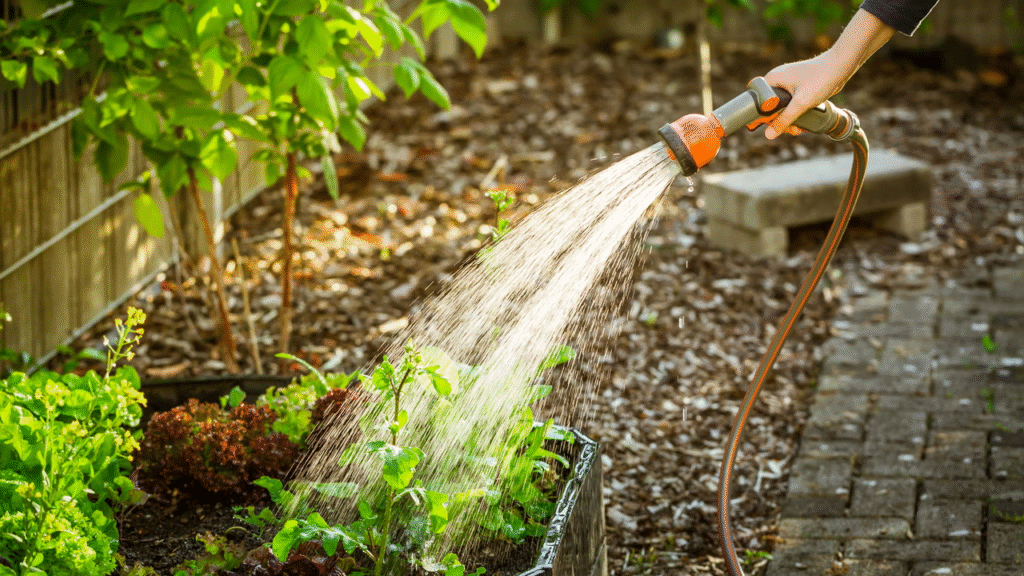
Special Timing Situations and Solutions
Certain conditions require adjustments to the standard watering timing recommendations. Understanding these exceptions helps you maintain garden health during challenging circumstances.
Watering After Fertilizer Application
The timing of irrigation following fertilization impacts nutrient availability and prevents potential damage to plants.
Quick-Release Fertilizers: After applying quick-release fertilizers, water immediately regardless of time of day to move nutrients into the soil and prevent leaf burn.
Slow-Release Products: When using slow-release fertilizers, maintain your regular morning watering schedule, ensuring soil stays evenly moist to support nutrient release.
Drought Restrictions and Timing Compliance
During water shortages, communities often implement watering restrictions that may conflict with ideal timing practices.
Adaptation Strategies: If restrictions limit you to evening watering, focus exclusively on soil irrigation techniques that keep foliage dry.
Alternative Approaches: Consider installing a rainwater harvesting system that allows more flexibility in watering timing while complying with restrictions. The EPA provides guidance on rainwater harvesting for landscape use that can help you design an effective system (EPA Soak Up the Rain).
New Plantings and Establishment Periods
Newly installed plants require special watering timing considerations until they establish root systems.
First Week Timing: For the first 7-14 days after planting, newly installed plants may need multiple daily waterings. Schedule these for early morning (around 7:00 AM) and late afternoon (around 4:00 PM) to provide adequate moisture without creating disease conditions.
Gradual Transition: As plants establish, gradually shift to morning-only watering while extending the depth of irrigation to encourage deeper root growth.
Conclusion: Creating Your Optimal Watering Schedule
As you develop your garden watering timing strategy, remember that the “best” time blends science with practicality. Early morning remains the gold standard for most garden watering, providing the perfect balance of efficiency, plant health protection, and water conservation.
By understanding how timing affects water use and plant response, you can create a schedule that meets your garden’s needs while respecting environmental concerns. Start with the recommendations in this guide, then observe your plants’ responses and adjust accordingly.
Remember that consistency matters as much as timing—plants thrive on regular care delivered at the right intervals. With thoughtful attention to when you water, you’ll be rewarded with a thriving garden that makes efficient use of our precious water resources.
For additional resources on water-efficient gardening practices, visit the EPA’s WaterSense program at www.epa.gov/watersense or consult your local Cooperative Extension Service office for region-specific timing recommendations tailored to your climate and growing conditions.
